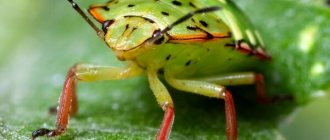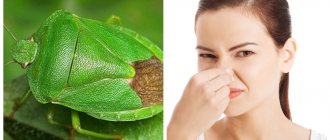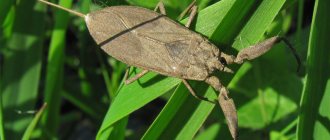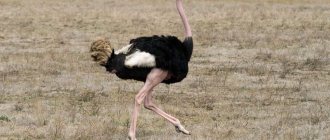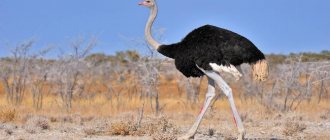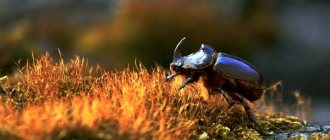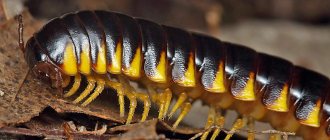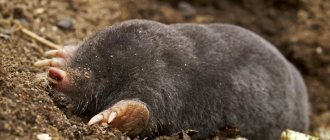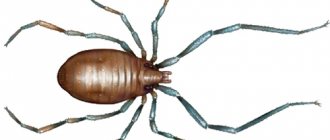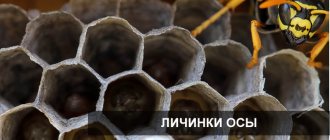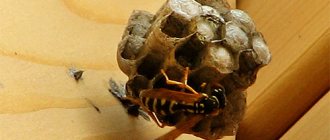The stink bug is a relatively large beetle with a flat body that, when viewed from above, resembles a pentagon. It is classified as an agricultural pest and produces a persistent unpleasant odor that is instantly disgusting and takes a long time to dissipate.
The stink bug is correctly called the stink bug. Belongs to the order Hemiptera, suborder – bedbugs, family – Pentatominae. The beetle got its name due to the similarity of the body structure with the shield. It is called a stink bug because of the strong odor that the bug produces for protection. Alternative popular names: American stink bug, turtle bug, berry bug.
Let's figure out what kind of life stink bugs lead, what species are found, what they eat and how they reproduce, what harm they cause and how to get rid of them.
Appearance and features
Although shield bugs are divided into many species that differ greatly from each other, they have several characteristic features:
- Size up to 12-15 mm.
- 1 pair of multi-segmented antennae that perform the functions of sensory organs.
- The mouthparts are of the piercing-sucking type with a proboscis and very small jaws, visible only under a microscope.
- An oval, flat body, covered on top with a hard, leathery membrane.
- Rectangular protrusions located in the cephalothorax area, giving the body the shape of a shield.
- 3 pairs of multi-segmented paws, consisting of 3-5 elements.
- The color is bright green or yellowish-brown.
- Not everyone has wings, but most do. They are usually paired: the front ones when folded look like a chitinous shell, the rear ones are larger, thinner and transparent.
An interesting feature of the beetle is that its color can change depending on the time of year. During the summer months, the insect turns green among the lush foliage. With the arrival of autumn, brown, black or yellow spots appear on its body.
Description of the species
The black-whiskered shield bug (Carpocoris purpureipennis) belongs to the family of true shield bugs, the genus Carpocoris. The Latin name of the family Pentatomidae is derived from two words – pente (five), tomos (section). In bedbugs, filamentous antennae consist of 5 segments, and the body has 5 main sections. The length of the insect is 10-14 mm. The head is triangular in shape, flat, partially retracted into the prothorax. The eyes are large and protruding. The antennae are thread-like, four segments are black, only the first is red. The proboscis is adapted for piercing plant tissue and sucking up liquid food. It consists of four segments.
The massive shield is wide at the shoulders and tapering at the back. The lateral parts are raised, the edges of the pronotum are almost straight. A wide abdominal rim protrudes from under the folded wings. The surface of the scutellum is densely punctured with small dots. The leathery parts of the fore wings are chitinized, the hind wings are well developed. The color of the body is variable, there are individuals of yellowish, purple, red-brown color. The corners of the shield are black. The limbs are orange, walking type, with two claws on the paw.
Information. The exit openings of the bug's scent glands are presented in the form of grooves.
Types of stink bugs
According to the generally accepted classification, the beetle belongs to the order Hemiptera and the family Pentatomidae. There are currently 4 known varieties:
- horse flies;
- predators;
- shield bugs;
- lace makers
In turn, they are divided into many types.
Tree stink bug
The wood stink bug grows up to 11-16 mm and has all the features characteristic of stink bugs. The tree stink bug is colored green, and on the lower part of its back there is a decoration in the shape of a peculiar brown shield.
Berry stink bug
The Berry Shield is a typical representative of the True Shield family and grows up to 11-12 mm. The berry bug is recognizable by its flat body and black antennae with yellowish rings. It is painted in a red-brown color with yellowness and a pronounced glossy sheen.
Cruciferous bug
The cruciferous bug has an official name - eurydema; It is also called the cabbage bug or the variegated stink bug. It has all the characteristics characteristic of shield insects, and grows no more than 10 mm. It is easily recognized by its oval body and bright pattern on its flattened back, consisting of contrasting light and dark areas. Its color combines 2 or 3 shades, including white, red, bright yellow or black.
Marbled stinkhorn
The pear-shaped body of the marbled bug is painted in an inconspicuous brown shade with light irregular spots on the back. Thanks to this coloring, the marbled stink bug is easily camouflaged on the ground, trees and bushes.
Harmful turtle
This beetle is colored light yellow and has an unusual appearance. The head of the harmful turtle smoothly blends into the body, and the edges of its wide proto-, mid- and rear-back cover the limbs, creating the illusion of having a shell. This bug grows about 10-13 mm and during the migration period is capable of flying over distances of up to 50 km.
Ruled
The lineated scale insect grows up to 11 mm and has a scutellum reaching to the top of the abdomen. It is known by its second name - the Italian bug, and is easily recognizable by its combined coloration, consisting of red-red and black stripes.
Pear lacemaker
A small bug that grows up to 3.3 mm and has a very unusual appearance. His little body has a mesh-shaped decoration with transparent cells that create a lace effect.
Cucumber stink
A tiny beetle up to 3 mm long, capable of jumping well. Therefore, it is often confused with a flea. It lives on the back of cucumber leaves and causes serious damage to plants.
The stink bug is a small pest with a big defense.
This creation of nature is familiar to everyone since childhood. Among the raspberries or gooseberries, you probably came across a green beetle, which also feasted on the gifts of the garden. We’ll talk about it today.
It looks small and harmless, but has such a characteristic smell that the impression from it is always unforgettable. For all ordinary people, this is an ordinary stink beetle , but, in fact, it is a bug from the scale insect family, or simply an arboreal stink bug from the order Hemiptera.
Habitat and lifestyle of the shield bug
Stink bugs are widespread almost everywhere. They live in Russia, Asia, Europe, Australia, Africa, South and North America. Representatives of some varieties are found even in Chukotka and Alaska.
Although bedbugs are considered unpretentious, they feel most comfortable in temperate climates. Places for mating and habitat depend on the species. In their natural environment, they settle in tree hollows, bird nests and animal burrows; in cities they hide in fallen leaves, sand, cellars and basements. And some individuals settle in human housing, climbing into unnoticeable cracks and places with high humidity.
Although stink bugs have wings, they have a short span and are used only to lift themselves slightly above the surface. To move and obtain food, insects use tenacious legs.
Bedbugs lead a measured lifestyle. In the warm season, insects are actively searching for food or mating mates. With the arrival of cold weather, beetles begin to actively choose a place to hibernate. Most often, they burrow deep into fallen leaves and spend the entire winter there.
Characteristic smell
The stink bug got its name for a reason. There are odorous glands on the body of the bug. Tree insects are guided by smell. Their sense of smell is too well developed. In this way, the tree shield communicates with other relatives, finds food, a mate for fertilization, and notifies of danger.
The scent gland is triggered instantly as soon as the beetle suspects danger. The smell of bedbugs is so strong that a person can smell it from a distance of up to 3 meters. The gland begins to actively act, and the bug at this time changes color. The shell becomes not green, but brown. The glands of young beetles are not as strong. But since insects stay in groups, you can feel their joint effort without any problems. Birds, sensing the smell of a bug, release their prey from their beaks, and other predatory insects rush to move away. The gland plays one of the most important roles in the life of a beetle.
What do stink bugs (stink bugs) eat?
According to the method of nutrition, they are divided into 2 groups:
- Herbivores. The diet of these insects is based on leaves, grass, juices of berries and flowers. Representatives of different species have their own preferences. Thus, forest bugs eat alder and larch leaves. Harmful turtles feed on grain crops such as oats, wheat and corn. Berry bugs eat raspberries, gooseberries, sea buckthorn, strawberries, chokeberries and currants. Lined stink bugs prefer dill, parsley and carrots. Marble pests destroy grapes, persimmons, apricots, citrus fruits and other fruits. They also eat peppers, tomatoes and corn. Cruciferous stink bugs feast on rapeseed, cabbage, radish, etc. All of them destroy crops and are agricultural pests.
- Predators. They feed on larvae, caterpillars, aphids and other insect pests. Predators have external digestion, so they do not immediately eat their prey. They kill the victim and, after waiting for decomposition, suck out the nutrients from it. In conditions of food shortage, predatory individuals can consume the remains of other insects, which are abundantly hidden in the forest litter.
Among the stink bugs there are also omnivorous varieties. For example, the wood bug eats cereals, berries, vegetables, fruits, young shoots and the remains of dead insects.
On a note. The larvae feed on young shoots. Therefore, when they appear, the rate of vegetation destruction increases significantly.
Nutrition
Bedbugs are not picky eaters; most species are suitable for grass and leaves. Only some smelly inhabitants prefer flower and berry juices. On forest lawns and clearings with strawberries you can find green bugs .
In garden plots they are especially often attracted to raspberries and gooseberry or currant bushes. In the forest, you can find the stink bug on the leaves of alder, larch, and less often on other trees. Although bugs are considered plant pests, sometimes they deviate from their preferences and eat caterpillars, thereby protecting the plantings.
The berry shield species is useful because it feeds on the juices of berries that are poisonous to humans. Certain species of beetles that suck liquid from small animals are classified as predators. They are distinguished by their bright color. They also feed on the remains of other insects under a heap of leaves when periods of starvation occur.
Reproduction
The stink bug does not have a clearly defined mating season and, under certain circumstances, it can bear offspring almost all year round. For successful reproduction, an insect requires:
- air temperature within 20-30 0C;
- available power sources.
The stink bug reaches sexual maturity at the age of 1.5 months and uses a traumatic method to reproduce. The male penetrates the partner’s abdomen with his genitals and leaves his seed, which she uses at her discretion.
Since biomaterial can remain in the female’s body for a long time, she usually lays eggs in very small portions. This method of reproduction increases the chances of maintaining the population of stink bugs even during periods of lack of food.
Typically, a clutch consists of an average of 20-200 eggs. They look like miniature chests and have a special “lid” through which at a certain moment the first instar larva appears. The young are very similar to adults and are covered with a hard chitinous shell. It does not grow with the larva and changes during the transition from one instar to another. It is quite difficult to get out of the shell and due to the difficulties of molting, most of the young animals die before reaching sexual maturity.
Chemical methods for controlling bedbugs in garden plots
For chemical treatment of garden plots, insecticides of various types are used to influence insects. There are three groups of drugs:
- contact (upon contact with a bug, they penetrate through the skin or shell into the pest’s body and destroy it);
- intestinal (getting into the stomach of the bug along with food, destroying the digestive system and infecting the insect);
- systemic action (contact-intestinal).
The choice of drug depends on the degree of insect damage to the area and the period of plant protection.
| Name of the drug | Type of effect on insects | Speed of action of the drug | Plant protection period |
| Caesar | contact | from 10 minutes | from 2 to 3 weeks |
| Fatrin | contact-intestinal | from 15 to 30 minutes | 2 weeks |
| Boreas (dangerous to bees) | systemic | 24 hours | up to 30 days |
| Chord | contact-intestinal | from 15 to 30 minutes | 7 days |
| Zolon | contact-intestinal | from 1 to 3 days | up to 20 days |
| Tager | systemic | from 3 to 5 hours | from 7 days |
When using pesticides, it is important not to allow the drug to come into contact with mucous membranes, to follow the safety standards specified in the instructions and how to use the solution.
Benefits, harms and dangers of stink bugs
The stink bug has a piercing-sucking mouthpart and causes significant damage to agricultural crops. Using a special rim, it pierces the stems of plants and sucks out nutrients, releasing a destructive poison that changes the viscosity of the juice.
A bug can leave traces of its vital activity on berries and fruits without even spoiling them. But such fruits cannot be eaten.
Not all stink bugs cause losses to farmers. Representatives of some varieties destroy the larvae of harmful insects, aphids and caterpillars. Thus, the predatory stink bug Perillus biveli feeds on Colorado potato beetles and their larvae. And piclomerus saves the crop from caterpillars and small insects. Therefore, it is not advisable to exterminate such bedbugs.
Stinkers are used to make a medicine that relieves alcohol addiction. To do this, they are filled with vodka and kept for 10 days. It is believed that the resulting tincture causes an aversion to alcohol. But this technique has no scientific basis.
Is it dangerous for humans?
Those wondering whether stink bugs bite can be reassured. The oral apparatus of the vast majority of these insects is not developed enough to damage human skin. In defense, only representatives of several predatory species can bite. But in general, a stink bug bite is more of a fantasy incident.
What is dangerous about stinkers is the consequences of their presence in the garden. They suck the juices from plants and their fruits, causing wilting and a decrease in yield. A few individuals will not cause serious harm, but an infestation of large numbers of beetles can be a serious problem for gardeners, as they can cause damage to crops, fruit bushes and trees.
Why do stink bugs emit an unpleasant odor?
There are specific glands located in the cephalothorax area of the stink bug. They are the ones who emit a stench similar to the smell of spoiled raspberries or rotten almonds. Thanks to it, the beetle can recognize its relatives. Due to this, it creates a semblance of communication and, through signals, can understand the intentions of other insects.
The source of the persistent disgusting amber is a special secretion produced by these glands. It contains cimicic acid and is absolutely harmless to the stink bugs themselves, but can be poisonous to representatives of other species. Most often it provokes spasms, paralysis and even death of the opponent. The stench serves as an effective way to scare away enemies, and with the beginning of the mating season it is used to attract individuals of the opposite sex.
How do they get into the house?
Most often, stinkers enter human homes completely by accident through a window or window. They can also fly into houses when weather conditions suddenly deteriorate, intuitively sensing the warmth. Another reason for their entry into residential premises is fires and other natural disasters. Insects begin to instinctively seek comfortable conditions and fly into houses.
They often end up in homes along with picked berries, as well as on clothes or shoes. Sometimes they are brought by gusts of wind from bushes and trees growing near the windows.
How to get rid of stink bugs in an apartment?
The easiest way to remove a stink bug from a living space is to throw it out the window. It is strictly forbidden to feed an insect, as this will create a persistent foul odor in the room.
An unconventional remedy based on nicotine and soap solution will help you get rid of the stink bug in your apartment. To prepare it, you need to crumble a pack of cheap cigarettes and fill them with two liters of water. After a few minutes, add dishwashing detergent to the resulting liquid, strain and use as a spray.
You can throw the bedbug into a tall container filled with soapy water, acetone, kerosene, gasoline or other organic solvent available in the house. This environment is detrimental to the stink bug. The insect will not be able to empty its glands, which produce a foul-smelling liquid, and will soon die.
If you have hairspray on hand, you can use it. It will reliably seal the holes on the body of the bug and it will not be able to spray out the smelly secretion.
You can catch bedbugs using a sticky trap made of thick cardboard and a thin layer of glue. It must be left in sofas, under furniture and in other places where beetles live. Traps should be moved periodically and checked for insects.
On a note. To prevent stink bugs from entering your apartment, you need to install mosquito nets on the windows, cover the outlet of the ventilation system pipe with a protective screen, and seal all cracks and cracks around door and window openings.
The smelliest animal on Earth
Four-toed anteater
The striped ferret is a very aggressive animal. Like the skunk, it also has a very strong, unpleasant odor. Its “aroma” is so intense that it can be heard for many meters around. It is considered by many to be the stinkiest animal in the world, but, in fact, the four-toed anteater takes first place in this unusual race.
Its secretions are 7 times stronger than those of a skunk and 5 times stronger than those of a striped ferret. Like many other smelly animals, this anteater releases a foul odor as a defense against predators. Tags Smelly animals Unusual animals
How to get rid of stink bugs in the garden?
In order not to be left without a harvest, it is advisable to begin the fight against stink bugs with stink bugs immediately after they are discovered on a personal plot, without waiting for the population to grow significantly. You can destroy them in several ways:
- mechanical;
- chemical;
- folk
Mechanical methods
Mechanical collection is effective in controlling small populations of beetles. They are caught by hand and for final destruction they are placed in a glass container with vinegar or other acid. The technique has several disadvantages. It does not allow collecting all the individuals and finding securely hidden eggs and larvae. Therefore, to achieve the desired result, it is better to combine mechanical collection with chemicals or unconventional means.
Traditional methods
Traditional methods of destroying stink bugs are safe for people, pets and cultivated crops. Unlike chemistry, they do not emit toxic odors or harmful substances and are prepared from available ingredients. But folk remedies are effective only against small populations. The most effective and popular of them are done like this:
- 100 g of dry mustard powder is poured into 500 ml of hot water and stirred well until completely dissolved. The resulting product is diluted with cool water, bringing the volume to 10 liters, poured into a spray bottle and sprayed on the infected plants. To destroy eggs and larvae of bedbugs, it is recommended to additionally wipe the leaves with a cloth moistened with mustard solution.
- 200-250 g of onion peels are poured into 10 liters of water and left for 4-5 days so that the liquid absorbs the juice and acquires a light yellow tint. The resulting infusion is poured into a spray bottle and sprayed on the affected plants 2-3 times a day every 5 days.
- Regular laundry soap is rubbed and scattered over the surface of the area so that it does not get on the leaves of the plants. Then the ground is watered and covered with flannel cloth on top. To avoid contact with soap, bedbugs will begin to climb onto the material, where they are caught manually.
You can scare away the stink bug using wormwood, hot pepper tincture or clove decoction. A plant popularly called black cohosh, Christophorus grass, wolfberry or crow berry will also help protect plantings from pests. It grows in warm climates and is scientifically known as black cohosh or black cohosh simplex.
Chemistry
Among the chemical agents used to kill stink bugs, broad-spectrum organophosphorus preparations can be used. Fufanon, Phosfamide, Actellik and Karbofos have proven themselves well in the fight against insects. These chemicals kill the bulk of the population in just 1-2 applications. But they have a relatively high cost and emit toxic substances that are dangerous to people, pets and beneficial insects. When working with chemicals to kill stink bugs, you need to take precautions and make sure that they do not get into your eyes or skin.
Important! Stink bugs quickly develop resistance to pesticides. Therefore, it is impossible to use the same preparation for treating a personal plot for a long time.
